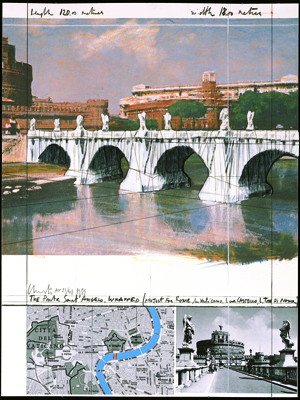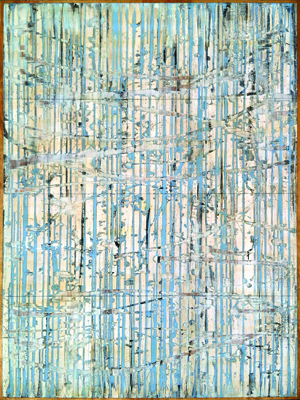PARK CITY GALLERY OWNERS ON THE ART OF COLLECTING
TEXT by Sabina Dana Plassé
Art collectors agree, collecting art is a passion that is not cheap and requires diligent research, but in the end, the heart most often dictates a purchase. What qualifies as worthy to some, fails to inspire others. Because art plays many roles in our lives, buying it can be a very personal choice or it can be an investment-fueled decision. And, no doubt, art can (and should) be a fun, exciting, and healthy investment enjoyed for generations.
Park City has a diverse and accomplished fine art gallery scene, which draws many collectors looking to outfit their homes and make an impact on their investment portfolio. Gallery owners often play a significant role in guiding clients and offering work that matches their clients’ tastes and interests as well as being a worthy asset.
There are many things about being a gallerist that I love,” J Go Gallery owner Jude Grenney explains. “But the one aspect that stands out is the satisfaction of helping to support artists. Creativity is such a valuable and often underappreciated gift. I love knowing that I’m helping to nurture creative people while encouraging others to appreciate art and add beauty and inspiration to their lives.”

Karen Terzian, owner of Terzian Galleries who has more than 30 years of experience in the business of art, says she enjoys working with first-time art buyers as well as seasoned collectors. “Sometimes, we’re asked to build a client’s collection of, say, Utah painters, while other times we work with someone who may be young and just getting educated about original art,” Terzian explains. “We help them discover their interests and the satisfaction of finding one-of-a-kind artwork to enjoy for years to come.”
Consulting is part of the everyday experience as a gallerist explains Thomas Anthony of Thomas Anthony Gallery. While working with clients, he considers location, space, size, placement, compatibility, lighting, and the correct sourcing and selection for a client’s needs. If the collector asks, Anthony says, architectural considerations can be discussed because proper installation is always important. “We want our collectors to have the best possible buying experience when they consider the purchase of a new painting or sculpture,” Thomas Anthony says. “If we can provide excitement, beauty, long-term enjoyment, and exceptional service for our clients when they purchase artwork, we’ve accomplished our goals.”
Photographer Willie Holdman, owner of Willie Holdman Utah Photography Gallery, has often worked on custom photography projects for clients with particular attention to the space where the art will be displayed. “A client approached me after seeing a home I placed my art in,” Holdman says. “What impressed them was that it seemed every piece was selected just for that space and fit perfectly into the scheme of things—as if it were planned from the beginning. They wanted to do just the same for their own home.”
There are many aspects to art consulting besides picking art or commissioning works. Installation and presentation are important for the security of the art and longevity of the work. For example, well-placed LED lighting not only helps the environment, but it also protects artwork. If an environment affects the paint or materials used in a piece of artwork, it may need climate control or special framing and glass. “Although most homes don’t have museum-quality temperature control or light control, it’s always advisable to protect the artwork in the best way you can,” Terzian says. “Too much sun exposure, of course, would definitely lighten the color of anything. There are technical window products that can reduce the sun exposure for a painting or textile piece. With sculptures, we often ask the artist to advise on the best way to protect a piece from the harsh environment if it was created to be displayed outdoors.”
Grenney says with the winter conditions in Park City, artwork should be selected and placed outdoors only if it is specifically created to stand up to harsh winters. “Because care for artwork varies widely by media and the conditions of its installation, we advise our clients on the proper care for the pieces they
purchase,” Grenney explains.


The gallery owners agree, working with collectors on placement is one of the perks of the gallery business. “There’s nothing like original art on the walls when you walk into a home,” Terzian says. “Art has personality and makes a home more interesting to the viewer. Trust us. There’s a reason why the art in a gallery or museum just ‘pops’ off the wall.” Placement and proper lighting both play a significant role in the overall impact of the piece.
Galleries often work closely with interior designers and architects on art installations. “It’s one of the other aspects of the job that we love,” Grenney tells. “Helping clients determine the best placement for their new artwork gives us an opportunity to see how they live with their current art collection and to discuss their future art needs and desires. Occasionally, the installation is difficult or needs special lighting. In those cases, we have a small group of professionals in those fields who we engage to help.”
Finding new artists and artwork for collectors who may not have the opportunity to see it elsewhere is another one of the important roles a gallery fills, especially in a mountain town such as Park City. “We vet the artists and their work to ensure that the pieces our clients add to their collection are not just beautiful, but significant and will continue to increase in reputation and value,” Grenney says.
Often gallery owners are the liaison between the artist and the client or collector. “On commissions, the role of facilitator is crucial,” Anthony explains. “This entails clear communication between client and artist and information that a collector can rely on including compositional values, color, and time frame.
Most importantly, we can ensure that the artist understands the client’s vision and that those expectations are met. In other words, we want the collector to fall in love with their choice and decision to go this direction.”
As far as investments go, art can certainly pay off. but in the meantime, it should be about enjoyment.